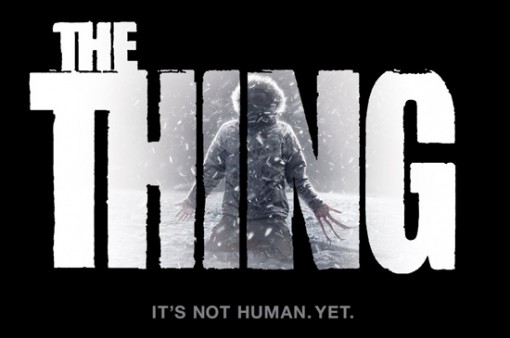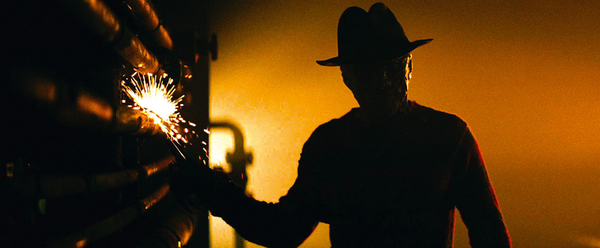The Blueprint to Horror Remake Success
I’m about to write a sentence I never thought I’d be writing. The remake of “The Thing” is actually pretty decent. While it still sounds weird to me to be reading this sentence, it’s true. The reason I’m so surprised to be writing that, is that I was one of the many who were ready to dismiss this film from the moment it was announced. I mean, how could it possibly get out from underneath the long shadow cast by the John Carpenter original? The answer is simple and also the blueprint that all remakes should follow in order to be worthwhile films in their own right.

“John Carpenter’s The Thing” is great for many reasons. It nails the isolated feel of the Antarctic setting, delivers a staggering amount of drama and tension through the paranoia felt by the characters, and has some of the best practical effects ever caught on film, even by today’s standards. It’s that final point which is probably the most defining characteristic of the original (which I know was also technically a remake of a much older film) and what comes to mind most commonly when the topic of “John Carpenter’s The Thing” comes up. This is also what allows the 2011 remake to succeed on it’s own merits.
Try as they might, very few film-makers would be able to deliver a version of the “The Thing” that would be able to trump the sense of isolation or paranoia of Carpenter’s version. Going even deeper than that, very few writers would be able to write characters are memorable or strong as Childs or Macready. Realizing this, the makers of the remake didn’t even attempt to do that. Their version of Antarctica feels much safer than the version seen in Carpenter’s film. The characters don’t feel constrained or confined in their setting and the creature itself never feels as well hidden or disguised as the one in 1982 film, so the paranoia isn’t there. The one area that today’s filmmakers would be able to compete with Carpenter is the special effects, and that’s wisely where the filmmakers here chose to distance their film from Carpenter’s.
The creature in Carpenter’s film is slow and stealthy. Generally, whenever it gets a drop on someone it’s either by surprise or because they’ve been somehow constrained. It’s an obvious extension of the practicalities of dealing with practical effects. While the creature looked amazing, logistically it just wasn’t possible to get it to move quickly or be very predatory in nature. It needed to slink around in the background and make calculated decisions to kill off the humans occupying the base. Because of the limitations of the medium at that time, “John Carpenter’s The Thing” is a slower paced film that gets it’s tension from an air of paranoia. That’s not the case in the remake. Thanks to computer-generated effects, the creature in the remake can run around the base at breakneck speeds chasing down the scientists. It can burst out of a body in seconds and stab them from afar with spiked tendrils. Throughout most of the film it even runs around without even being disguised, which is something that never happened in the original film until the very end (and to that, it was a very brief scene). Thanks to the advances in technology, 2011’s “The Thing” is quicker and gets it’s tension from the fact that the creature rampaging through the base as opposed to stalking it’s prey, and can come from anywhere at any time.
This is generally a characteristic seen in the more successful remakes and I think the way these remakes need to approach their relationship with the original film in order to work. While the “Dawn of the Dead” remake would never be able to outdo the social commentary present in the original, it never even tries. Instead, the film-makers realized that we now have the technology to make a couple dozen lumbering zombies a couple thousand bloodthirsty zombies and it stands alone as an enjoyable, more action-packed zombie film compared to the originals more plodding, cerebral tone. Look at the remakes that have been abject failures and you’ll notice a pattern to why they’ve failed. They’ve all stuck too close to the source material and weren’t able to find a new take on the same story.

The recent “A Nightmare on Elm Street” remake is a perfect example of this. Despite advances in CG technology allowing for Freddy to stalk his victims in new, far more elaborate and crazy ways, the remake hits on almost all the same points as the original, even to the point of copying a few of the kills almost verbatim. There’s just no point to the remake as it’s essentially the same thing as the original film but with a different cast. Given that it's done nothing to distance itself from the original series, fans are left with no option but to compare the contemporary Freddy with Robert Englund's, which ldooms it to fail. Despite contemporary technology allowing for crazy Freddy monsters that Wes Craven would have never been able to deliver upon, the film-makers followed Craven’s vision almost to a ‘T’ and delivered one of the most pointless films ever made.
The remake craze has been going on long enough now to where it’s been shown that it is possible to remake a classic, iconic horror film in a way that creates a successful film. If the film-makers can realize that advances in film-making technology have allowed these contemporary retellings to go off in completely different ways unthinkable back when the originals were made, a remake can be a good film and stand on it’s own legs. However, if they’re simply trying to take on these classics and go up against them in the same areas that made them timeless classics in the first place, they’re just asking to lose. With more films from the horror pantheon getting the remake treatment (“Evil Dead”), I’m hopeful that film-makers realize this fact and approach their remake as such. Otherwise, they’re just wasting everyone’s time.

